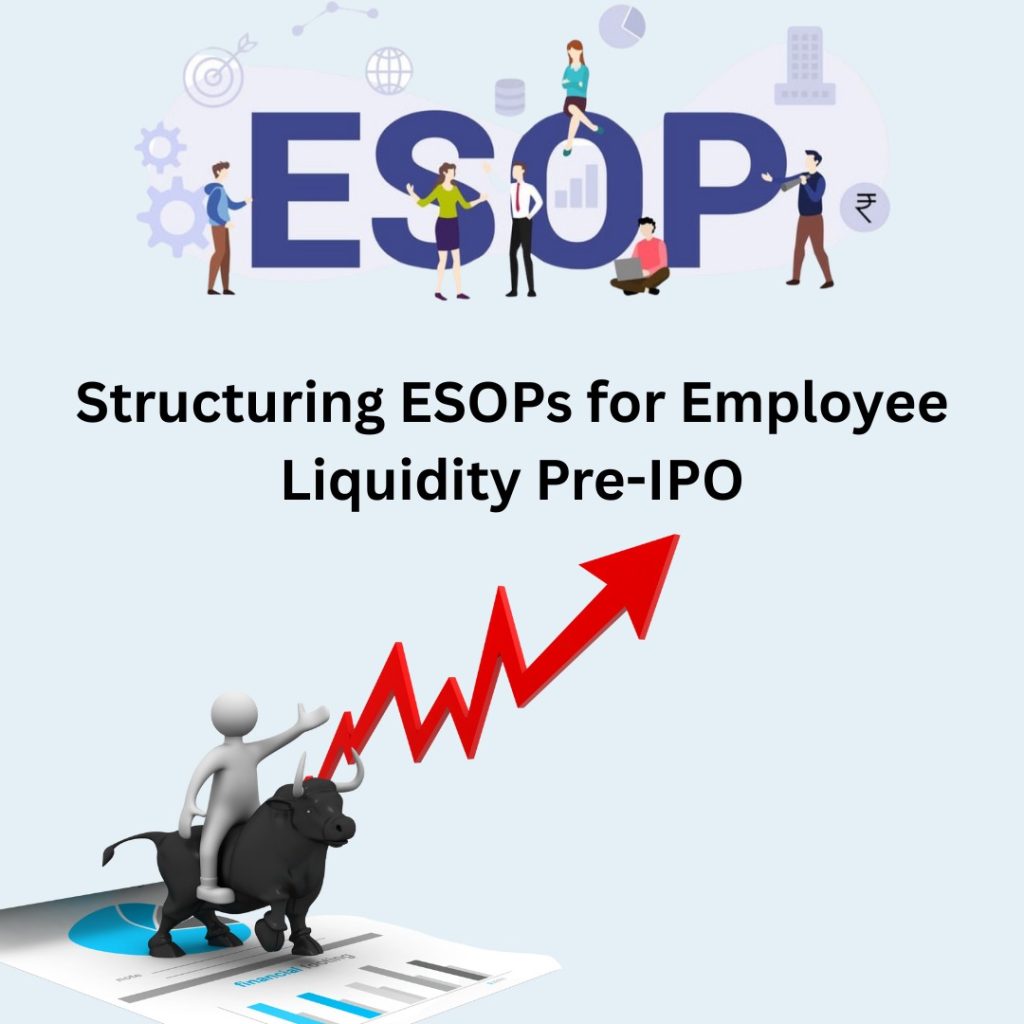Have you ever wondered how certain employees make crores and crores of money after the IPO of any big company?
How do they benefit the employees so significantly, and what is the process behind it?
This phenomenon is called Employee Stock Ownership Plans (ESOPs), where a company offers employees an ownership stake in the company.
ESOPs are part of the global best practices and have found widespread appeal as an effective tool to motivate employees who are provided with an ownership stake in the company. The accumulation of ownership through ESOPs is viewed as a valuable form of remuneration as it creates a stronger alignment of employee and shareholder interests.
The ownership interest provided as per the ESOPs is in addition to and is also distinct from any performance shares, restricted stock units, or stock options that employees might also receive as part of their total compensation packages. Over time, many companies have made potentially large equity grants to employees from directors down to entry-level workers in an effort to establish a direct relationship between the value realized on the grants and the ultimate value of the company.
For instance, Google, long before it became the tech behemoth it is today, was attracting talent with the promise of equity stakes. But rather than making employees wait for an IPO, the company offered liquidity options during private fundraising rounds. This allowed employees to sell a portion of their shares before the IPO, giving them immediate financial returns while still keeping a vested interest in the company’s long-term success.
Similarly, Paytm in India offered early employees the opportunity to cash out some of their shares before the IPO, ensuring that employees could realize wealth from their hard work. This not only incentivised top talent to stay with the company during the critical pre-IPO phase but also built a culture of loyalty and shared success.
Although ESOPs provide employees with an opportunity for equity ownership, one major challenge that they face is liquidity. This, especially when offered to potential employees, becomes an issue for the obvious reason that they would hesitate to give up liquidity—a feature of cash—in exchange for non-cash assets when they are unsure of their future with the company. As a result, firms have to create one or various financial strategies that allow pre-IPO employees to access the value of their equity stake.
This initial ability to create liquidity is a factor in making ESOPs attractive to employees, as well as an essential ingredient in helping firms attract and retain the talent they need to navigate the tough process of taking a company public.
In an unwelcome climate, employees can flee companies if they perceive that they could not access something that was promised to them. Effectively designing and planning the structure of an ESOP can exponentially enhance the company’s culture and loyalty towards the company.
Structuring ESOPs
There are numerous diverse ways that Employee Stock Ownership Plans (ESOPs) can be structured in order to accomplish the objective of liquidity, and it is important to note that these various options are not mutually exclusive. The effectiveness of achieving liquidity is reliant upon the proper implementation of a stock option plan, which includes essential aspects such as forfeiture rights, vesting, and exercise constraints.
The adequacy and suitability of the chosen mechanism are influenced by several critical factors, including anticipated turnover rates, the ease with which the company’s stock can be traded, the company’s disposition towards dividend payments, as well as the buy-sell agreement that exists among stockholders.
An ESOP has the potential to afford liquidity by employing the following methods: authorising the selling of stock exclusively to the firm itself, providing funds to facilitate the acquisition of stock by the firm, specifying the individual responsible for determining the stock price, pledging stock to employees without actually delivering it to them, and offering dividend equivalents.
When constructing and designing the ESOP plan, it is vital to thoroughly consider the impact of the vesting schedule or plan in place. For example, if an employee who is subject to a five-year vesting schedule decides to resign after completing only three years, would they be required to sell their put, or would they be able to retain it until a future option date?
The determination of the evaluation method is another crucial factor to consider when structuring the plan. This encompasses choosing whether to establish the value at the time of investment, at the time of exercise, or over a fixed period. It is worth noting that a zero-cost plan will not effectively serve the purpose for which stock options were originally designed, and this may consequently lead to employee confusion and resentment.
Ultimately, the trade-off between the desires and preferences of the employees and the overarching goals and objectives of the company must also be carefully examined and weighed. It is worth mentioning that smaller organizations that are privately owned and not publicly traded might lean towards implementing the Registered Retirement Savings Plan (RRSP) variation of ESOPs more frequently when compared to larger firms.
Additionally, companies operating within certain industries may display a preference for one specific type of plan over another due to the presence of industry-specific characteristics and features. For instance, firms operating within the real estate industry are likely to utilize the leveraged ESOP model as it aligns more closely with their particular needs and circumstances.
Pre-IPO Liquidity: Your Secret Retention Weapon
The Problem
Your best employees are trapped with paper wealth they can’t touch. Pre-IPO equity feels worthless without liquidity, creating a dangerous retention crisis.
The Solution
Enable liquidity on 10-20% of employee equity through structured ESOP trust deals. This transforms distant promises into tangible value, proving your equity has real worth.
The Impact
Strategic pre-IPO liquidity:
- Supercharges retention by delivering immediate gains
- Attracts top talent seeking proven equity value
- Reduces recruitment friction with credible compensation
The Strategy
Execute 2-3 liquidity events before IPO, allowing employees to realise gains on ~20% of holdings. This creates maximum core team retention while maintaining excitement for remaining upside.
The Bottom Line
Liquidity isn’t a perk—it’s your competitive advantage. Stop losing talent to cash-paying competitors. Turn equity promises into reality and watch your team’s commitment soar.
Give employees a taste of victory before the final win.
Conclusion:
Utilise ESOPs to increase your chances of attracting and retaining talent in the corporate world. Beyond these benefits, ESOPs create a responsive and energetic workforce.
So, are you ready to build a stronger team through ESOPs?
Looking to implement an ESOP and have questions about how to structure it effectively? Book a call with us using the link below for FREE guidance on this.

